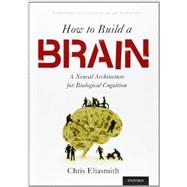How to Build a Brain A Neural Architecture for Biological Cognition

How to Build a Brain A Neural Architecture for Biological Cognition
- ISBN 13:
9780190262129
- ISBN 10:
0190262125
- Edition: 1st
- Format: Paperback
- Copyright: 06/01/2015
- Publisher: Oxford University Press
.svg) Rent
From $41.92
Rent
From $41.92
List Price $67.20 Save
| TERM | PRICE | DUE |
|---|---|---|



List Price $67.20 Save $0.67
Usually Ships in 3-5 Business Days
We Buy This Book Back!
Free Shipping On Every Order
Note: Supplemental materials are not guaranteed with Rental or Used book purchases.
Extend or Purchase Your Rental at Any Time
Need to keep your rental past your due date? At any time before your due date you can extend or purchase your rental through your account.
Summary
Examples of such models are provided to explain a wide range of data including single-cell recordings, neural population activity, reaction times, error rates, choice behavior, and fMRI signals. Each of the models addressed in the book introduces a major feature of biological cognition, including semantics, syntax, control, learning, and memory. These models are presented as integrated considerations of brain function, giving rise to what is currently the world's largest functional brain model.
The book also compares the Semantic Pointer Architecture with the current state of the art, addressing issues of theory construction in the behavioral sciences, semantic compositionality, and scalability, among other considerations. The book concludes with a discussion of conceptual challenges raised by this architecture, and identifies several outstanding challenges for SPA and other cognitive architectures.
Along the way, the book considers neural coding, concept representation, neural dynamics, working memory, neuroanatomy, reinforcement learning, and spike-timing dependent plasticity. Eight detailed, hands-on tutorials exploiting the free Nengo neural simulation environment are also included, providing practical experience with the concepts and models presented throughout.







